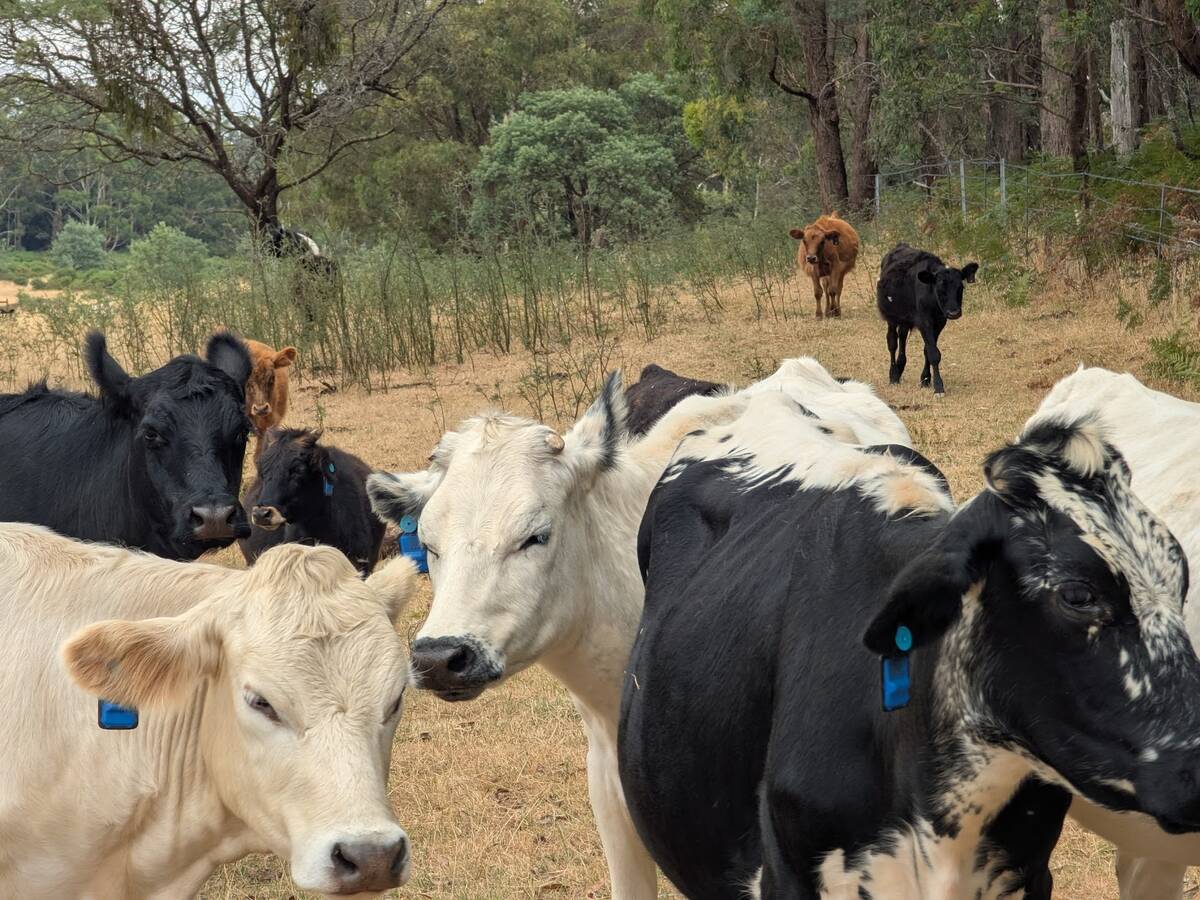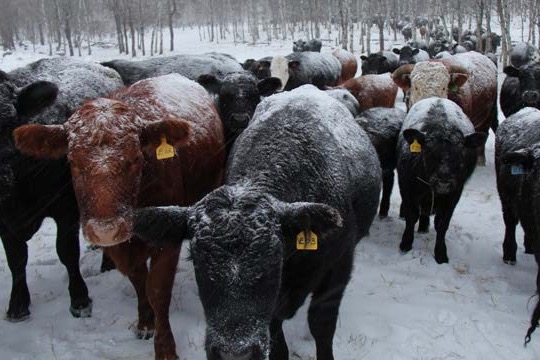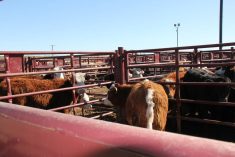Last fall, while driving through central Alberta and Saskatchewan, I saw pasture after pasture full of mature Canada thistle and aspen regrowth, which reduce available forage. Over the years, research has found that rotational grazing can help control these weedy outbreaks.
The main reason for rotational grazing is to give plants a chance to regrow and recover from grazing before being grazed again. Healthier forage plants, in turn, produce more forage and are superior competitors against weeds compared to those found within a continuous grazing system. In addition, by maintaining forage in an active growth stage, plants are generally higher in nutritive value under rotational grazing.
One key to rotational grazing success is to allow livestock to remove the proper amount of biomass for a given stage of growth before moving the herd to the next paddock. This can vary from 20 to 40 per cent early in the year, to 50 to 70 per cent later in the year. This gives grazed paddocks an opportunity to regrow and maintain vigour before being grazed again.
Read Also

Australian company brings ear-tag tech to Canadian pastures
With Smart Paddock, beef farmers and ranchers can track their cattle through GPS technology
When applied appropriately, rotational grazing can optimize forage yields and animal production while also helping control weeds such as Canada thistle and aspen regrowth. Grazing intensity and time of year are further considerations when using cattle as a tool to control brush encroachment and weeds.
Related: Beating back burdock
Agriculture Canada is currently promoting rotational grazing adoption for Canadian cattle producers. Funds are available to install rotational grazing systems using electric fencing and local forage and beef organizations have the information on these programs. With this in mind, producers with Canada thistle or aspen regrowth problems could install electric fencing around the affected areas and concentrate their cattle to graze out the problems.
The cattle should be held in the affected area for a few days in the spring so the livestock can graze down the weeds or aspen regrowth area, then moved to another paddock. A portable water source could be used to meet the cattle’s needs.
Knocking back Canada thistle
Canada thistle is a widespread problem on most pasture lands of the Prairie provinces. Although thistle is a prolific seed producer, much of its spread is from the large creeping root system that allows it to tolerate disturbance. Canada thistle is classified as a noxious weed and where present its spread must be controlled. Thistle roots commonly spread laterally one to two metres per year and can go as long as six metres. Even pieces of root as small as one-half centimetre can produce new plants, making it very difficult to control using cultivation.
Dr. Edward Bork at the University of Alberta has done significant research with his graduate students on controlling Canada thistle in pastures. One-time mowing didn’t provide long-term control, he says, because mowing stimulates regrowth of thistle shoots from below ground.
“Mowing was only effective if repeated several times annually over the years, explaining why this weed is uncommon in hayland,” says Bork.
Simultaneously applying fertilizers with herbicides annually enhanced thistle control by the second year. Fertilizer made the forage more competitive, helping suppress thistles. However, applying fertilizer without weed control increased thistle growth.
“Among the herbicides tested, the greatest long-term thistle reduction came from those with residual soil properties, such as Grazon or Lontrel, both of which led to superior control when applied in early June when thistle plants were at the early bud stage of growth,” says Bork.
Bork and his team also found that more intensive grazing systems could also control Canada thistle.
“Implementing high-intensity, low-frequency rotational grazing where individual pastures were grazed two to three times annually for several years led to large reductions in thistle populations. Cattle were found to consume thistle plants early in the grazing season when thistle shoots were young and palatable. This grazing method kept the thistles at the early growth stage when the rosettes were most nutritious and likely to be eaten by cattle.”
Intermittently grazing thistles prevented seeds from developing and spreading under rotational grazing, Bork explains. After three years, cattle had virtually removed thistles from the experimental pastures, he adds.
“Cattle were found to damage Canada thistle through hoof action during intensive grazing. However, we don’t recommend this intensive a grazing treatment be applied at the same time each year because it will eventually reduce forage production, and this in turn could result in more weeds.”
The team also found that the highest season-long forage yields in the Aspen Parkland area of Alberta came from high-intensity, low-frequency grazing treatments. The grazing period was generally four to five days, with intense grazing pressure (75 per cent utilization), followed by a six-week rest. Continuous grazing systems saw the lowest forage yields and the most Canada thistles.
Deferring grazing through the sensitive spring green-up period and into summer also helped increase forage production, further increasing plant competition and suppressing Canada thistle.
Bork and his colleagues also characterized the quality of Canadian thistle at grazing. Plants maintained at the rosette stage had very high protein levels — about 18 per cent — and total digestible nutrients exceeding 80 per cent. As a result, cattle voluntarily consumed a lot of thistle under the high-intensity, low-frequency grazing system, while avoiding the weed under free-choice continuous grazing.
For additional information on controlling Canada thistle, visit the Beef Research website.
Suppressing aspen
Several years ago, Dr. Art Bailey and Dr. Barry Irving at the University of Alberta found cattle would graze emerging aspen suckers in the spring when the regrowth had been mowed or treated with herbicides the previous year. “We observed the cattle eating aspen leaves and twigs at the edge of the forest even under light June grazing intensity,” says Bailey. “We found that the cattle were selecting and eating aspen in the spring when palatable grasses and forb forages were readily available.”
To control aspen regrowth, says Bailey, heavily graze the area at a high stocking rate in June and early July for a short duration (a few days to two weeks per paddock). Aim for 60 to 70 per cent utilization of forage and woody suckers. Repeat this grazing technique in the years following to eventually control brush regrowth. Bailey found that heavy June grazing stopped aspen forest from spreading into grassland.
“Aspen suckers are most nutritious and palatable in early spring but by August and September, the woody stems become less palatable for the cattle.”
Cattle preferred to browse five times more in June when leaves were present and stems were more tender than after leaf fall in October.
Irving thinks winter feeding in areas with aspen regrowth would also work. “If you use moderate- or high-quality feed and feed to the cattle’s need rather than feeding all the material that the cattle will consume, the cattle will still feel a bit hungry and they will browse aspen readily in the winter, even though their nutritional requirements are being met.”
However, wintering cattle in the area where aspen are encroaching may not be practical for some operations. Snow may have to be used as the water source, or another system set up. But for some operations, it might be worth trying.
“I have seen wintering fields all over the province with little problems with aspen regrowth,” Irving says.
Bailey also found that during drought, aspen became an important source of green forage as the grassland dried out. When the rains returned and the grasslands greened up, the cattle returned to graze the new green grasses and forbs.
More thoughts and caveats
Bailey and his team also investigated cattle grazing newly harvested, commercially viable aspen forests on Crown grazing leases. In this case, the goal was to encourage aspen regrowth. He sees a need for more co-ordination between grazing and forestry interests on Crown land in the future. “Our studies showed that the aspen regeneration and grazing were compatible if the cattle were excluded for one year after forest harvesting and then delayed until August 1 from grazing the area in the second and third years after forest harvesting. This delay enabled sufficient lignification of the aspen to occur. The young trees could resist having their terminals and main laterals grazed, crunched and broken off in late summer and fall.”
Managing grazing in this way allowed both interests to see financial return through grass and tree regrowth for about five years. After that, the clear-cut again became a young forest.
“There was some forage in mature aspen forests but higher forage and browse were available in the clear-cut area”
However, even grazing has its limits when it comes to controlling plants such as snowberry.
“It is a very difficult shrub to control since it is not palatable to cattle,” says Bailey. “In our research, we found that western snowberry could only be controlled by using herbicides, such as 2,4-D, at the appropriate dosage, and then repeated in the next year or more as required. The repeat dosage was required as the snowberry re-established its canopy one year after spraying with 2,4-D.”
But, Bailey says, well-managed intensive spring grazing can control other palatable woody species such as raspberries, saskatoon and some rose species. “Such a grazing practice must be followed by a rest period of at least a month or more before being grazed again. Each rancher needs to adapt their grazing practices to their specific situation. There is no specific grazing practice that can fit every situation.”
If there are poisonous plants in any of the fields involved, don’t try to control brush or thistles with short-duration intensive grazing in the spring or summer. This is generally not an issue on tame or naturalized pastures but could be a problem on native rangeland where cattle have a better chance of encountering the poisonous species.
In the past, producers were reluctant to use their cattle to graze down weeds and aspen regrowth due to concerns that cattle might lose weight. But if the cattle are moved to a lush productive paddock afterwards, the cattle will quickly regain any lost weight due to compensatory growth.
“That good old beef cow will do a lot of work for you in terms of controlling thistles and aspen,” says Irving.
Duane McCartney is a retired forage-beef systems research scientist at Lacombe, Alta.
















